Essential Spinning Tools & Accessories
There’s nothing quite like making the materials for your craft. Whether you knit, crochet, or weave, you’ll need yarn, and somewhere along the way, you discovered spinning and decided to jump in. Congratulations!
While you really only need a stick and some wool to get started spinning, you’ll soon find that a few extra tools come in handy. In this article, we’ll walk through some of these essentials.
Also, we will link to helpful resources throughout this post, and at the bottom, you’ll find a Quick-Reference Checklist PDF you can use to keep track of what you have.
Something to Make Twist & Fibre
Let’s start with the basics: the spinning tool and fibre. Without these, you can’t make yarn. You can skip wool and use plant or other animal fibres, but we’ll touch on that shortly.
Spinning Tool
This could be a spindle, spinning wheel, or e-Spinner. Any of these will let you make yarn, and many spinners use just one for years, exploring endless variations. Each tool also comes in different styles and types, which we cover in more detail in Choosing Your First Spinning Wheel, The Drive System on Flyer/Bobbin Spinning Wheels, and The Taxonomy of Spindles: Spindle Styles & Their Best Uses.
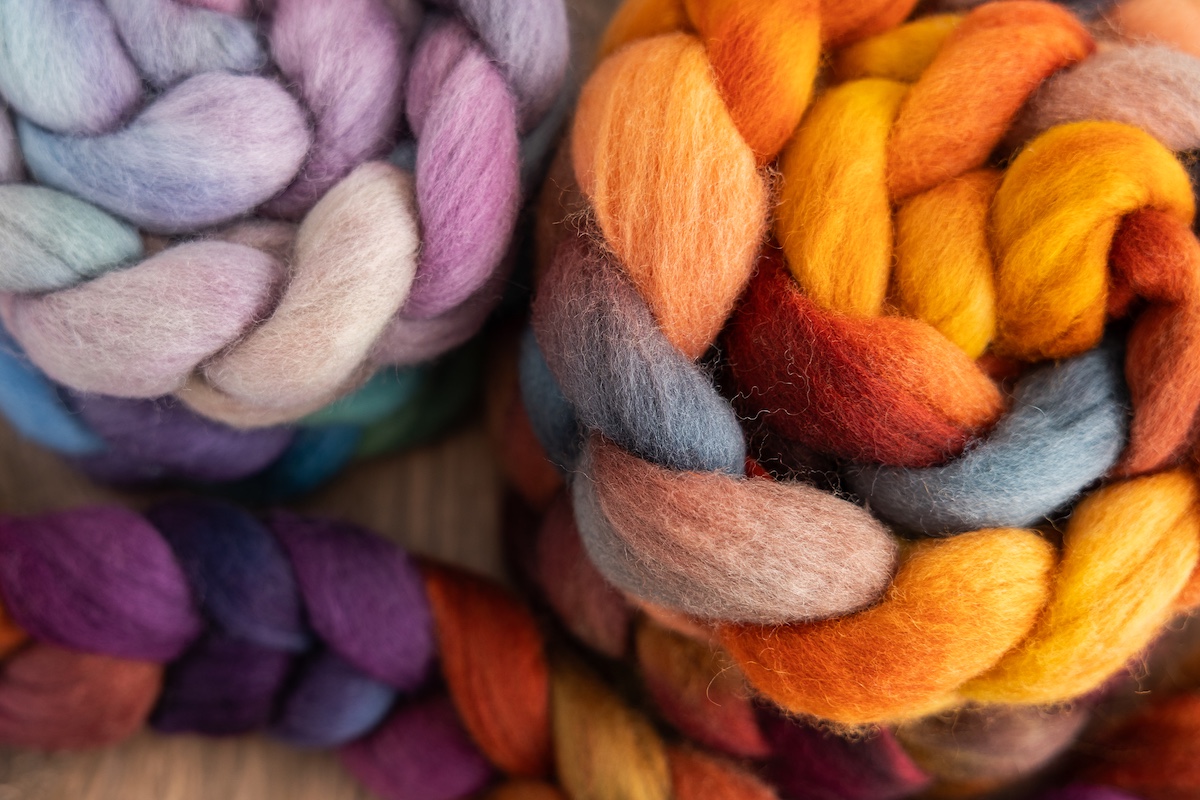
Fibre
Fibre options include wool, fur, silk, plant-based fibres, and synthetics. Just like spinning tools, there are countless variations within each category. We won’t list them all here, but we do have a series of articles to help you explore the possibilities on our Learn Spinning page.
Plying Tools
Once you’ve spun singles onto your spindle or bobbin, what comes next?
Nostepinne
You can wind your singles off by hand or with a nostepinne. This simple tool lasts a lifetime and helps you create centre-pull balls, which let you ply from both the centre and the outside of the ball.
Lazy Kate
This is a favourite among spinners. Despite the name, this kate is anything but lazy. A lazy kate holds your bobbins upright, horizontal, or at a slight angle, while you ply. Some wheels come with a built-in lazy kate, and you can also make one yourself.
Plying Tool
Similar in purpose to the centre-pull ball, a hand-held plying tool works like a bracelet-style plying method. It’s especially handy for small quantities of yarn, typically 10 grams or less.
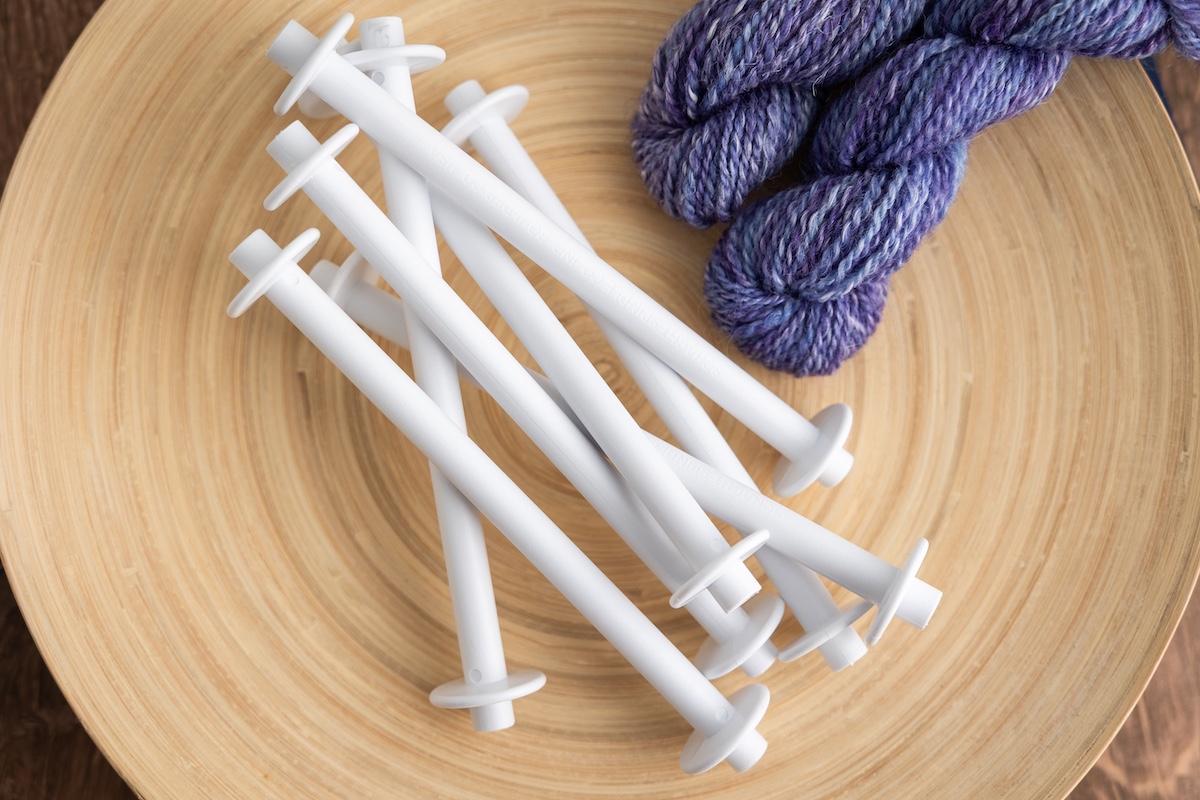
Rewinding Singles
Some spinners prefer to rewind their singles before plying. For this, extra bobbins are useful. Inexpensive storage bobbins made for weaving work well, and they hold a good amount of yarn. Weaving bobbins for shuttles are another option. You’ll also need a bobbin winder to help move the singles. Some people use a power drill, but please be careful and go slowly.
Niddy Noddy
This classic tool helps you remove yarn from your spindle or bobbin after it is plied and winds it into a skein. From there, it’s ready for wet finishing and setting the twist.
Wet Finishing Tools
Now it’s time to wash the yarn, set the twist, and watch the magic happen!
Basin
You’ll need something to soak your yarn in. A tub or sink works fine, but a bowl is ideal because it allows the yarn to sit undisturbed. This is especially helpful when using hot water and letting the yarn cool gradually.
Wool Wash
Choose a soap suited to the fibre you’re working with. A gentle wool soak is usually a safe bet. We like Soak, but you can also use a biodegradable, scent- and dye-free dish soap.
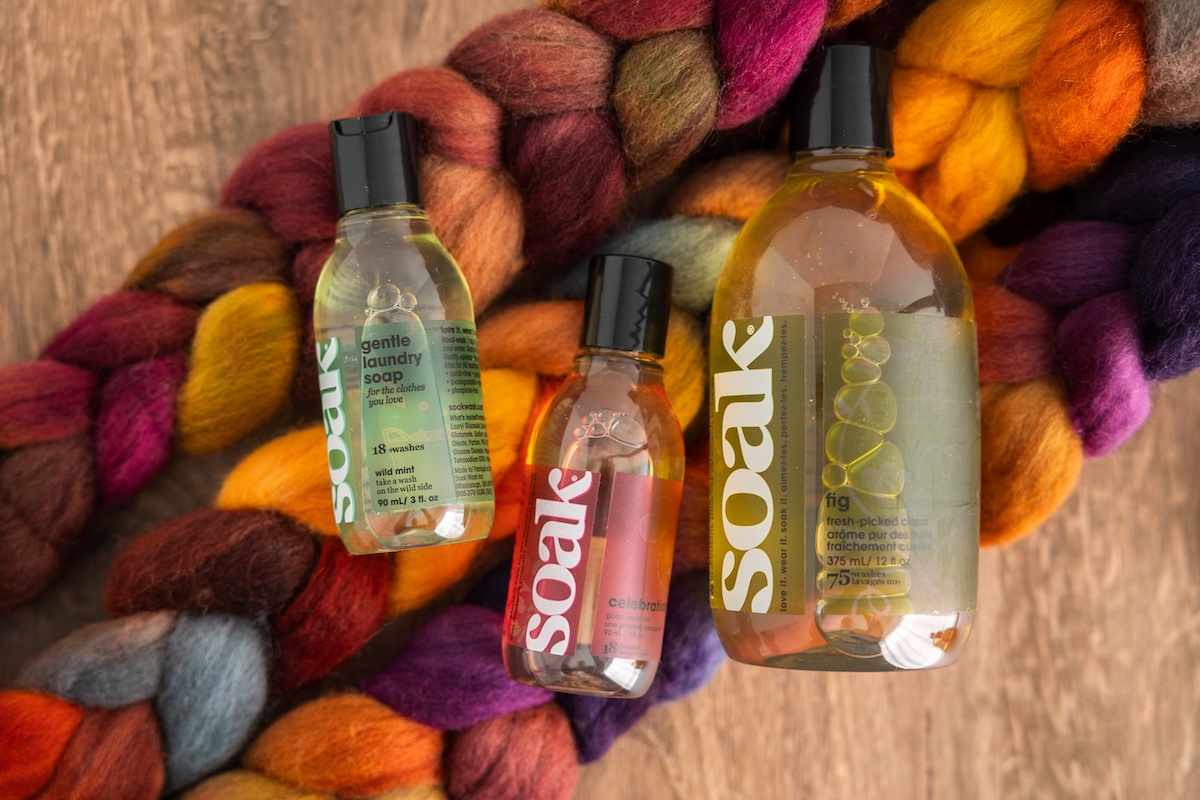
Towel or Spinner
To remove excess water, avoid wringing. This can distort your yarn’s twist. Instead, press the yarn gently with a towel or use a dedicated spinner. A short spin cycle in your washing machine also works well.
There are more finishing techniques you can explore, like snapping or thwacking your skeins, but once finished, be sure to let them hang dry, or lay the yarn flat on a towel to dry.
Tools for Measuring Your Yarn
Before you can use your freshly spun yarn, you need to know how much yardage you have and how to properly measure it. These tools can help!
WPI Tool (Wraps Per Inch)
You can use a ruler or a dedicated WPI tool. Wrap your yarn around it to see how many times it fits in one inch. This gives you a good idea of your yarn’s thickness.
Angle of Twist Tool
This helps you examine the angle of your yarn’s twist. Some people use a twist gauge or even a small protractor-style tool to check how tightly twisted their yarn is spun.
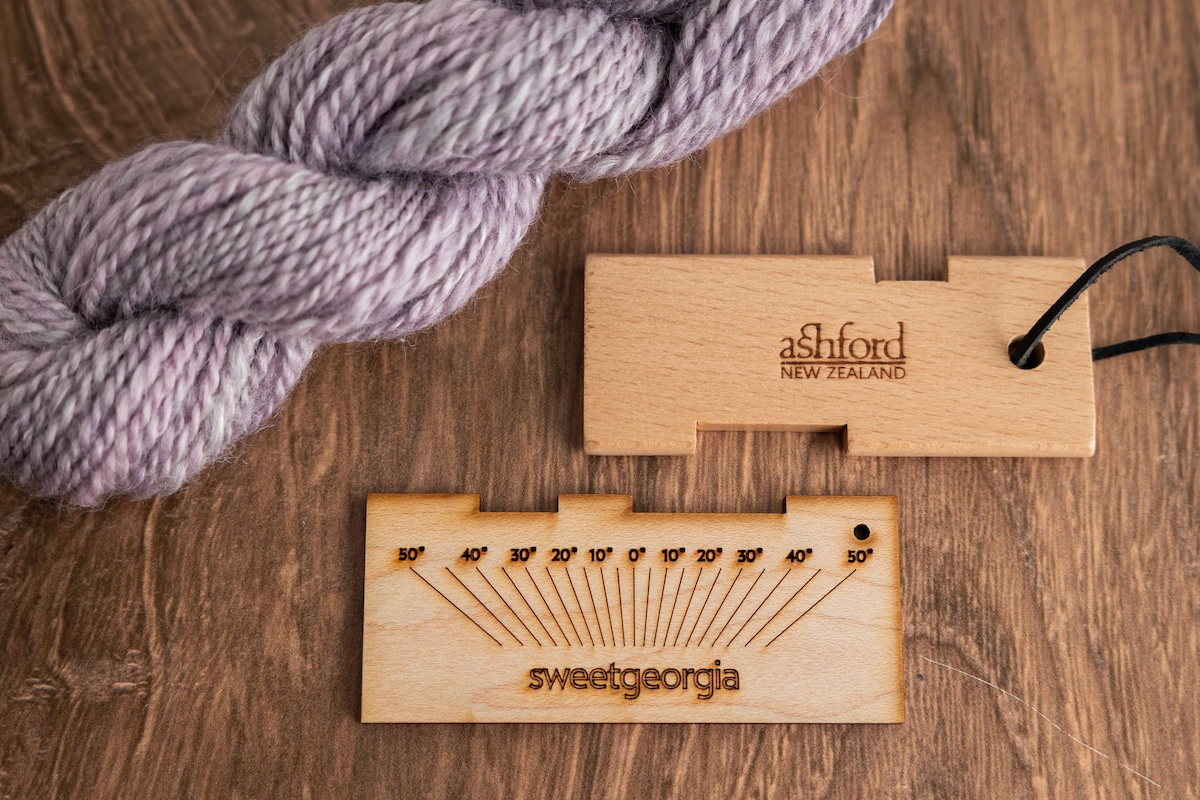
Measuring Tape
To measure the length of your skein, use a soft tape measure. Some spinners use their niddy noddy for an estimate, since niddy noddys are sold as half- or full-yard lengths sizes, but yarn can stretch or shrink depending on the fibre after wet finishing. For the most accurate measurement, wait until the yarn is dry, then measure the length of the skein and multiply by the total number of strands.
Paper and Pencil
Take notes as you spin. If you want to recreate a yarn later, it helps to have a record of the breed, yardage, thickness, and any other details. Index cards are a great option because they are sturdy, making it easy to attach a sample to them (and they can be used as yarn tags later!).
Extras You May Enjoy (or Need!)
Spinning Oil
Every spinning wheel is a little different, but most need to be oiled regularly, often daily. Check your manual or look online to find the oiling points specific to your wheel. Most electric spinners don’t require oil, but it’s always good to confirm for your particular model.
Spindle Bag or Box
Protecting the tip, shaft, and hook of your spindle helps keep it in good condition. Since spindles are so portable, you might find yourself spinning just about anywhere. A sturdy bag or box makes it easy to take them with you and offers a beautiful way to store your precious spindles when they’re not in use.
Yarn Swift
Once you’ve spun your yarn into a skein, you’ll need to keep it open and under gentle tension to wind it into a ball. A yarn swift, also called a yarn umbrella, makes this process smooth and easy. Or, if you prefer, a friend with outstretched arms works in a pinch.
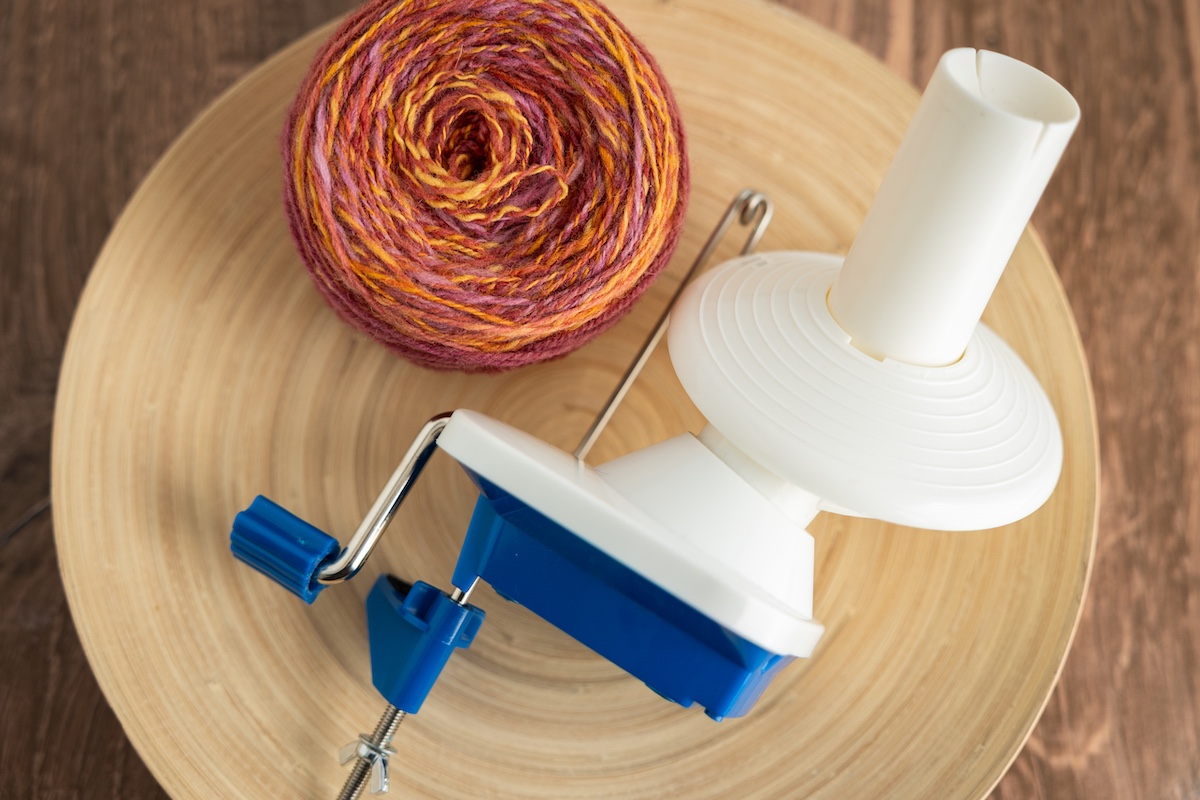
Ball Winder
While a nostepinne will always do the job, a ball winder is a lovely convenience. It creates tidy, centre-pull cakes and is especially useful when working with your freshly spun and finished yarn.
Orifice Hook
These generally come with a wheel or e-Spinner, but if yours didn’t, it can make threading the orifice on the flyer much easier!
Scrap Yarn
It’s always helpful to keep a bit of scrap yarn nearby. For spindle spinning, it can help you get started. For wheel spinning, it’s great for making your bobbin leaders or separating singles when only using one bobbin.
Final Thoughts on Spinning Tools
While we are sure there may be things we have missed and items that are new to the market, this is a general list to get you on your way for a smooth, easy spinning experience!
Courses to Help On Your Journey
At the School of SweetGeorgia, we have over 100 courses to help you on your fibre arts adventures. From knitting, spinning, crocheting, weaving, dyeing, and more, we are here to help. Here is a list of some of our basic spinning courses:
- Spinning From Scratch
- Spinning with Suspended Spindles
- Spinning with Supported Spindles
- Spinning with e-Spinners
- Tuning Up Your Wheel
- Tension Systems
- Spin-In Clinic
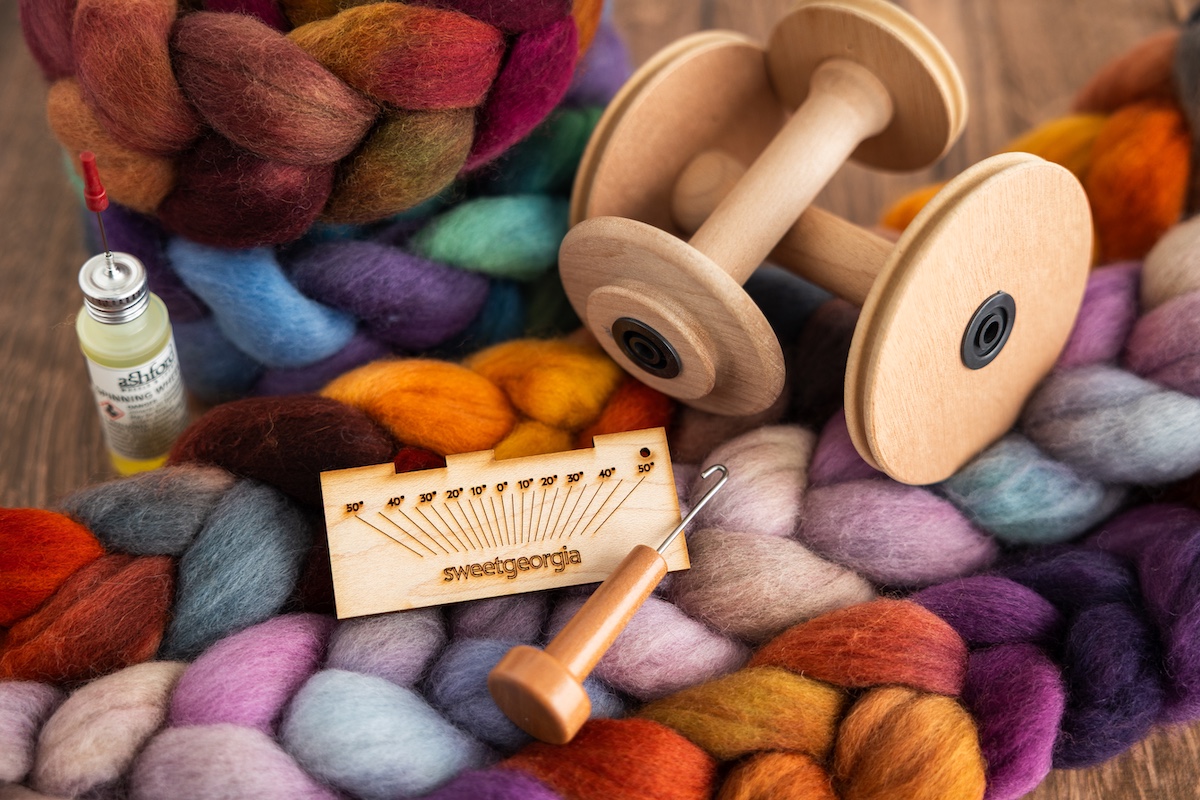
Join Our Community!
- At the School of SweetGeorgia, we’ve built a vibrant and welcoming community of fibre-loving makers, passionate instructors, and dedicated staff. Whether you’re looking for guidance on a new technique or just need a little creative encouragement, we’re here to support you every step of the way.
- Not yet a member of the School? We invite you to come and see what it is all about! Use the code: EXPLORETHESCHOOL to save 15% on an All-Access monthly membership!
- We welcome you to join us in our SweetGeorgia Community. This is where we share projects that inspire, have fibre-filled conversations, host make-alongs, and participate in a variety of virtual meetings! We discuss all things knitting, crocheting, spinning, weaving, machine knitting, and more!
- Want to stay in the loop? Subscribe to our newsletter! It’s a simple way to stay updated on what’s new at SweetGeorgia and the School of SweetGeorgia, catch up on the latest articles, watch new SweetGeorgia YouTube videos, and be a part of our community without any pressure to post. We value your presence, no matter how you choose to connect with us!
Let us know what your favourite spinning tools are. We are always excited to talk fibre tools!
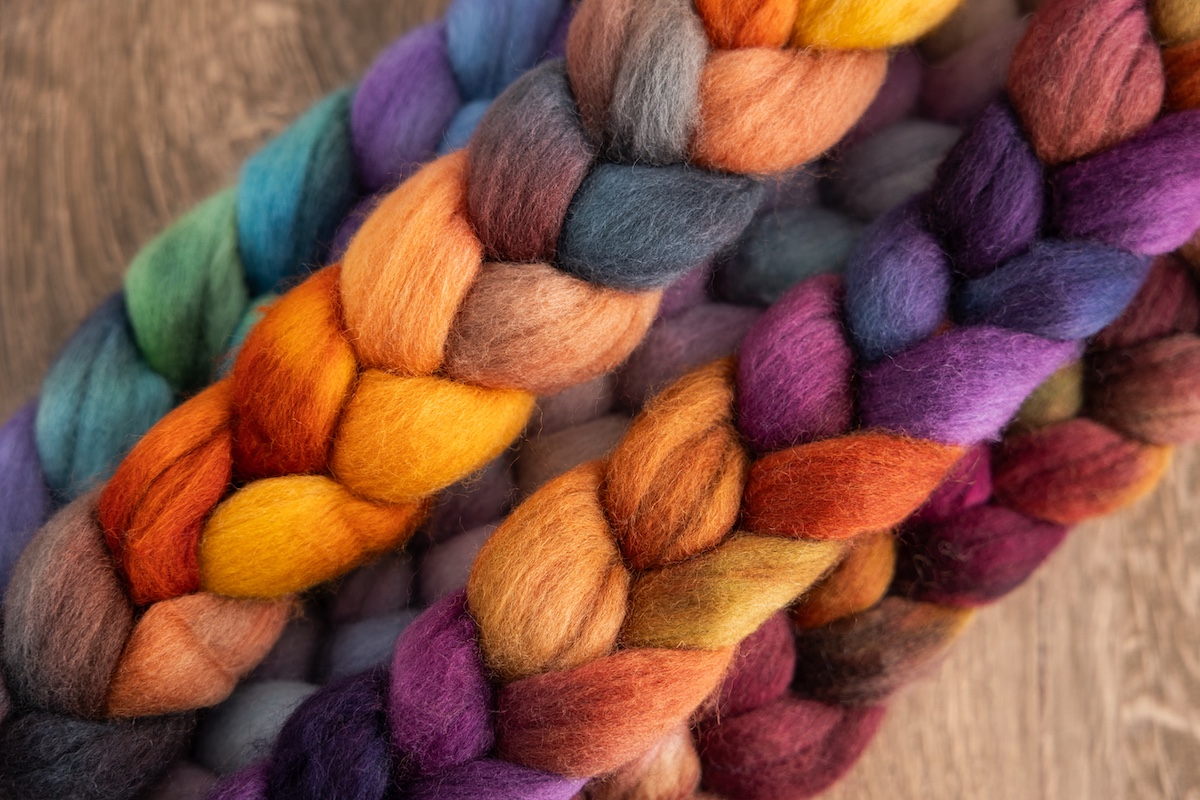
Checklist
Here is a quick checklist you can use to see what you have, need, and want!
The post Essential Spinning Tools & Accessories appeared first on SweetGeorgia Yarns.
Comments
Post a Comment